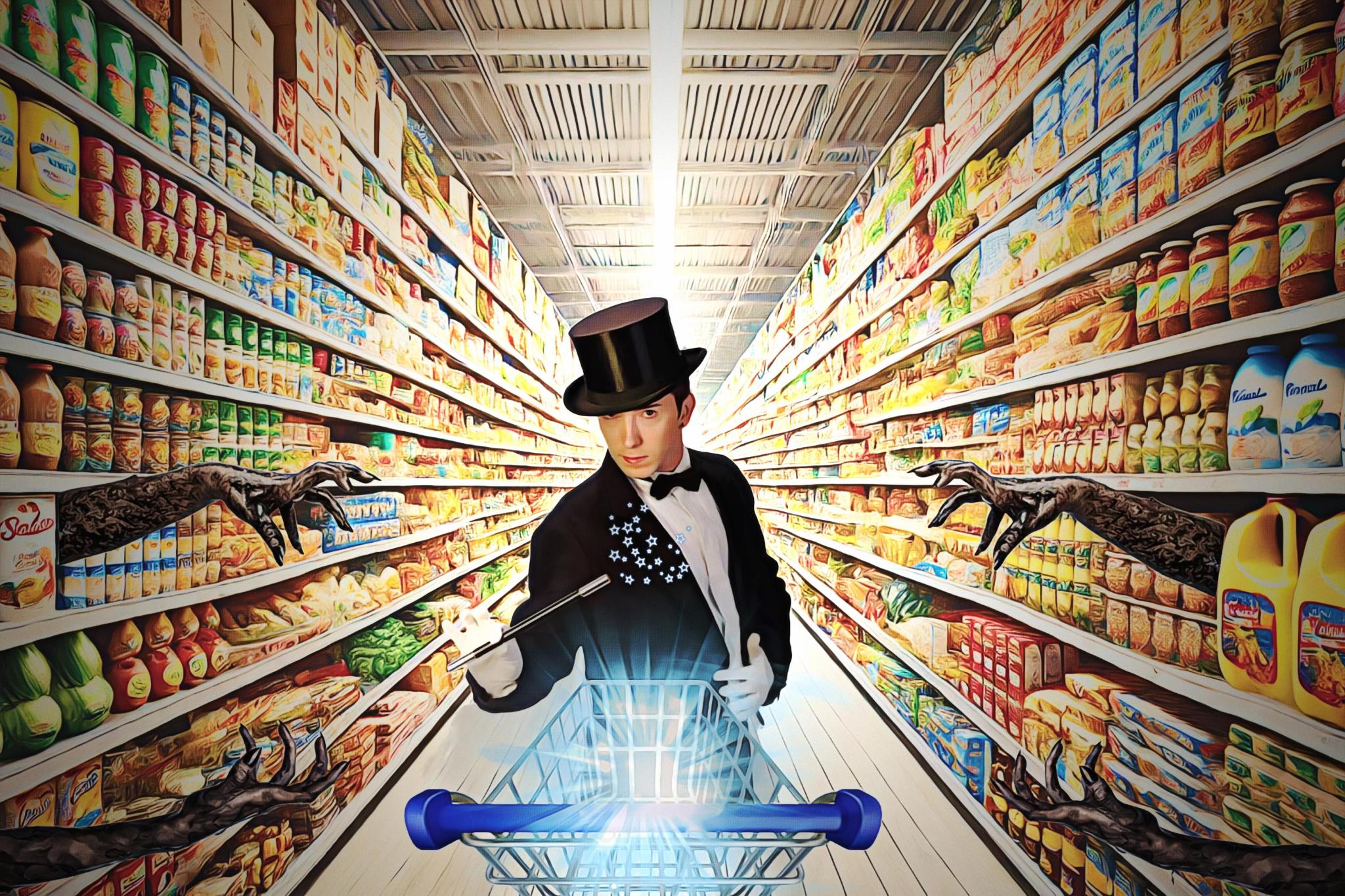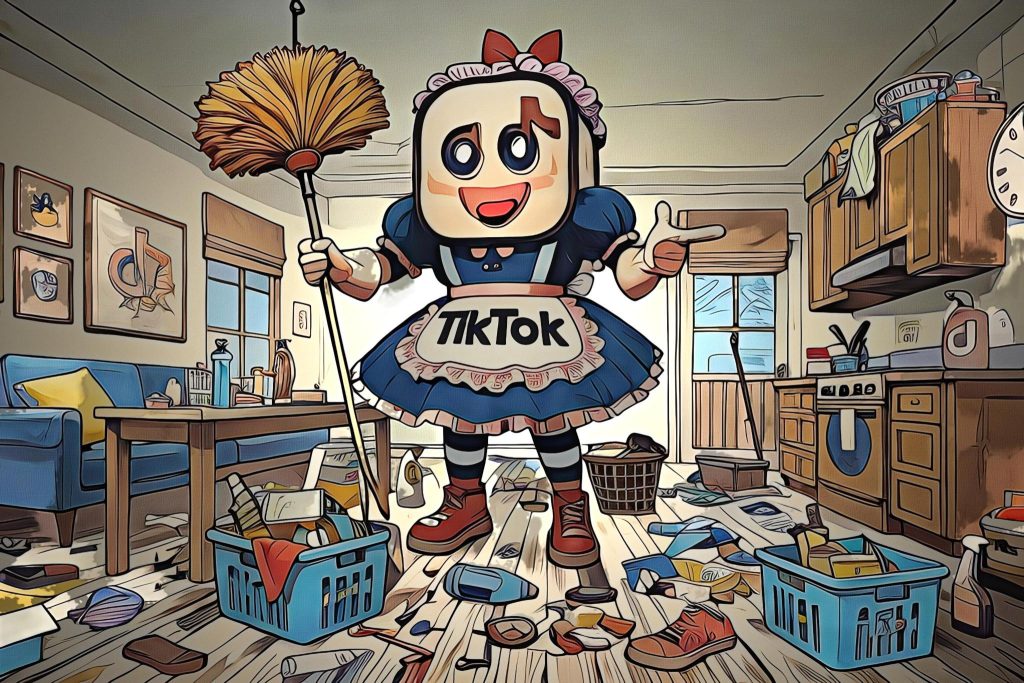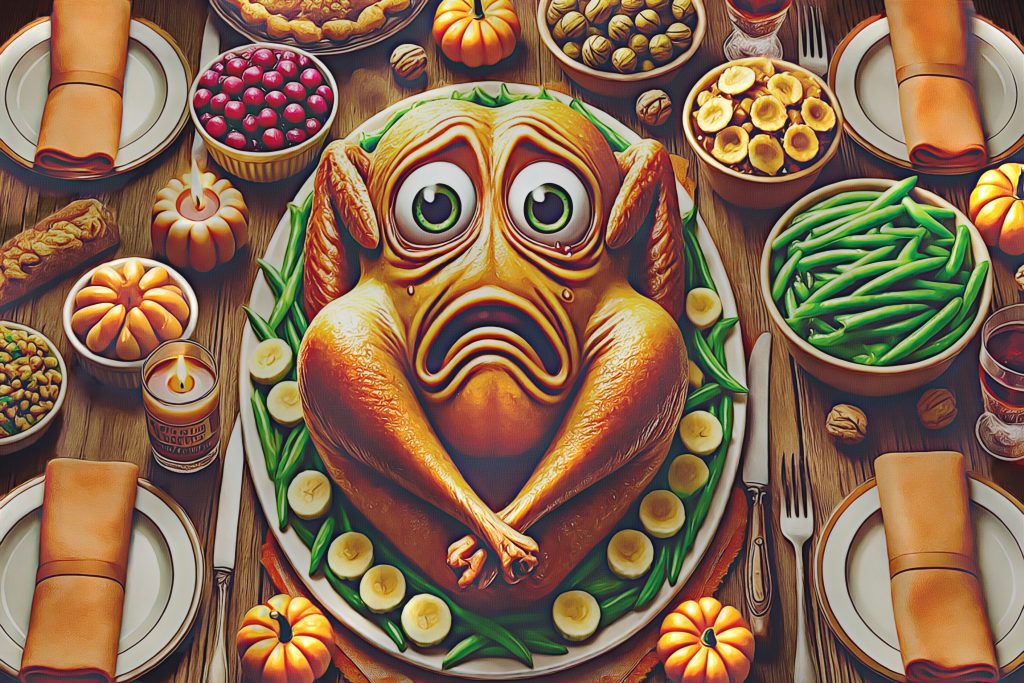Let’s be real: grocery stores aren’t here to graciously provide you with essential foodstuffs—they’re here to make money. And with razor-thin profit margins, they’ve mastered the art of squeezing just a little extra from your wallet. From the second you walk in, it’s like a perfectly choreographed performance of psychological tricks designed to leave you with a cart full of things you didn’t even know you needed.
With inflation soaring, we’re all trying to pinch pennies on our weekly essentials. But these days, stepping into a supermarket feels more like walking into a marketing minefield, where every aisle is primed with products that you suddenly “can’t live without.”
Think you’re too savvy to fall for it? Think again. Here’s how your seemingly innocent grocery store is sneaking extra dollars out of your pocket.
1. The Essentials Scavenger Hunt
Ever have one of those days where you just need to pop in for bread and milk? Well, you better lace up your sneakers because what should be a quick stop turns into a full-on trek across the entire store. Grocery stores strategically place essentials at opposite ends, forcing you to stroll past all those tempting (and usually unnecessary) items. You may have come in for the basics, but after navigating overpriced endcaps and irresistible snacks, your cart’s looking a lot fuller—and so is your receipt.
And the worst part? When you walk in for that “one thing,” only to get so distracted by all the tempting goodies that you completely forget the very thing you came for in the first place…
2. Constant Aisle Chaos
There’s nothing quite like the satisfaction of finally memorizing the layout of your local supermarket—until, out of nowhere, they decide to rearrange half the store. This is indeed no accident. Stores constantly switch things up because a confused shopper is an easy target. While you’re wandering around trying to find where they hid the pasta, you’re more likely to stumble upon things you didn’t plan to buy—but suddenly can’t resist. Talk about sneaky…
3. Checkout Line Temptations
By the time you hit the checkout line, you’ve spent way too long in the store and are probably a little hungry. Enter the overpriced snacks, drinks, and tiny luxuries conveniently placed to tempt you while you wait. You weren’t planning to spend $3 on a mini chocolate bar, but now it’s practically begging to be thrown into your cart. And that random set of four chapsticks? AA batteries? Suddenly, you’ve got chapped lips and a TV remote at home that’s desperately in need of fresh batteries. Funny how that happens, right?
@hannahshamji Grocery store psychology and why we buy from the checkout aisle #consumerpsychology #whywebuy #grocerystore
♬ original sound – Hannah | Consumer Psychologist
4. Higher Prices for Online Orders
During the pandemic, many of us fell in love with the convenience of apps offering contactless grocery shopping. Whether it was pulling up to the store and having an employee load your groceries into your car, or indulging in the ultimate luxury of having them delivered right to your doorstep, it all felt like a game changer. But, as with most luxuries, convenience comes at a price—literally. You’d think online shopping would cost the same as in-store, but many stores actually charge more for the same items when you order online. Add delivery fees and the inevitable substitutions (where your cheaper option is magically “out of stock,” but a pricier one isn’t), and suddenly, you’re paying a premium just to avoid the in-store chaos.
@ktdombomb Bye @Instacart — you can go shave your back now. Jerks. 🤬
♬ original sound – Kaitlin Mara
5. The Faux Sale
“SALE!” screams the bright red tag. But wait—when you check the actual price, it’s barely a discount, or worse, just the regular price. Grocery stores love to trick shoppers into thinking they’re scoring a deal, banking on the fact that most of us don’t look too closely at the fine print. Spoiler: You’re not saving as much as you think.
@samanth_3 Fake discounts on food products. #coop #grocerystore #groceryshopping #scamus #foodPrice #joke 😅😅
♬ I Wanna Dance with Somebody (Who Loves Me) (Cover Whitney Houston) – Mimoo安小烦
6. Out-of-Reach Bargains
Now, where exactly can you find the most affordable brands in a gigantic supermarket? Oh, they’re either up on the top shelf where you need to channel your inner NBA player, or down so low you practically have to crouch like you’re digging for treasure. Meanwhile, the pricier options are sitting right at eye level, just waiting for you to grab them. And no, that’s not by accident—it’s all part of the plan.
@katsaves Replying to @Novice poodle groomer who else knew the cheaper products are on the bottom shelf?! 💸 #moneysavingtipsuk #fooddeals #foodshop #savingmoney #howtosavemoney #foodprices #shopping #shoppingtips #supermarketsaving #moneysavinghacks
♬ Blue Moon – Muspace Lofi
7. Produce That’s Too Pretty
Oh, that fresh mist on the veggies looks so refreshing, right? Wrong. It’s not just there to make the produce look more appealing—it’s also making it heavier. And since produce is priced by weight, you’re literally paying for that extra moisture. That dewy cucumber? It’s basically a mini money trap.
But here’s the kicker: that “refreshing” mist often contains chlorine. Yep, you read that right, the very stuff we dump in swimming pools. Horrifying, right?
@afro.kills The mist that sprays on produce in grocery stores is not just water. It’s actually a chlorine solution. It’s even sprayed on organic produce. Make sure you wash your produce at home before eating it. Stay cognizant! #fyp #organic #pesticides #fruit #vegetables #health #food
♬ original sound – Ramese Sanders
8. The Seduction of Smells and Lighting
Ever wonder why the bakery section smells so divine or why the produce looks so good under those lights? It’s all a part of the plan. Pleasant smells trigger hunger, making you more likely to splurge on extra goodies. And that flattering lighting in the produce aisle? It’s designed to make everything look fresher and more vibrant than it actually is. From sight to smell, the grocery store is trying to seduce you in every way possible in order to shell out more cash.
@giannaahernandez i am a true survivor 🐸#fyp #foryou #prep #reversediet
♬ original sound – giannaahernandez
There are dozens of sneaky tactics supermarkets use to drain your checking account, but there’s an even more deceptive strategy at play, and it’s taking a toll on our waistlines.
The fact is, grocery stores and food producers make the biggest profits on the items that require the least effort to produce, which brings us to—yep, you guessed it—processed foods. We’re talking cookies, chips, granola bars… all those sugary, carb-loaded, preservative-packed foods. And don’t even get me started on cereal—just that one product alone brings in staggering profits.
Then there’s the deceptive food labeling. Many products that proudly market themselves as “natural” or “organic” are, frankly, a joke. There’s almost no difference between a regular box of Pop-Tarts and its “organic” counterpart. It’s just another way for food companies and stores to trick you into buying the same processed junk—only this time, they’re charging you more for the “healthy” label.
If you want a real deep dive into this scam, check out an incredible video from food expert Dr. Eric Berg. He brilliantly explains how processed foods are not only taking over store shelves but also quietly undermining our health.
So, the next time you walk into a grocery store, be mindful of the subtle strings they’re pulling. It’s a carefully orchestrated game, but now you’re in the know.
Stay sharp, stick to your list, shop the perimeter, and don’t let their tricks win you over. You’ve got this—happy shopping, but this time, on your terms!
Till next time, be wickedly wonderful.







Make a list and stick to it, don’t be easily distracted and don’t go food shopping when hungry.
They are just children in large bodies. “You haf no discipline!”
[…] The supermarket hustle: How grocery stores are tricking you into spending a lot more and eating way … […]
Must be tough for young men to find decent women nowadays. What has happened to these women?
In other words, “there’s a sucker born every minute”.
Shocker, retail stores take advantage of idiots!
I live in Michigan Kroger offers shipping to your door. I’ve been using them for 6 months. They charge 7.99 a month no limit on deliveries. It saves me a lot of time and gas, and grief in bad weather. Shop online and take my time to order. If there is a problem with an item they make it right. Also the take paper coupons . Just give them to the driver and its takin of the bill immediately.
The “chlorine” you say is sprayed on the veggies is actually Hypochlorous Acid (HOCl).
A simple Wikipedia search will tell you the following:
So, it is not chlorine. It is not bad. It is helpful.
With that said, your point on the moisture adding to the weight of the product is valid.
I understand this site is mostly clickbait, but do better. We already have nut jobs trying to destroy speech. No need to give them more ammunition.